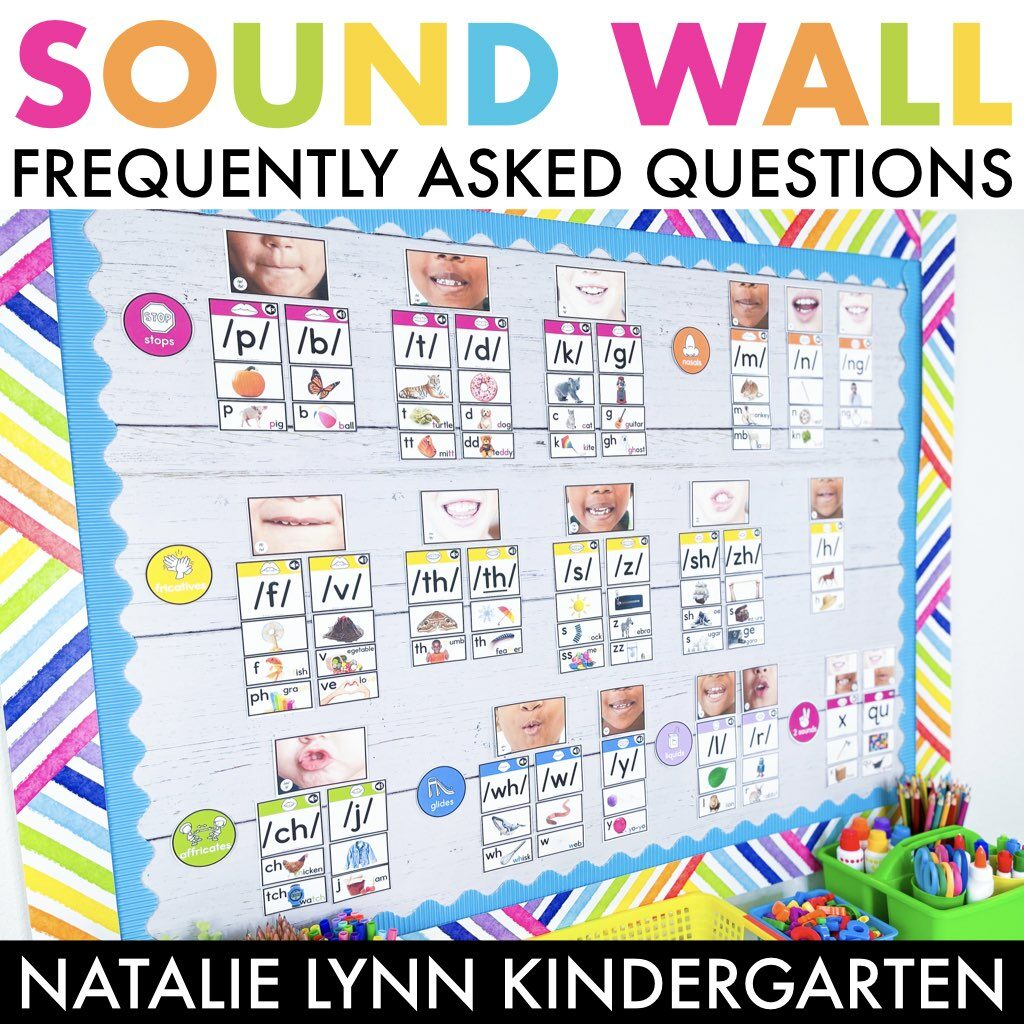
In this blog post: I am answering your frequently asked sound wall questions about how to prepare and use a sound wall in your classroom.
If you’ve been hanging around my little spot of the internet for a while, you’ve know that in recent years I made the shift from balanced literacy to all in with the Science of Reading.
Leaning into the Science of Reading wasn’t a hard decision for me; after all, it just made sense! But there was one thing I was hesitant about…
Switching from a word wall to a sound wall.
In my head, I just couldn’t understand how a sound wall would be effective! How would I use it? Why would students reference it? But I kept researching and learning, and I finally decided to try it out for myself. And once I made that switch, I was sorry it took me so long!
For those of you who may be in the same place that I was, or you just have a few lingering questions about how to use a sound wall effectively, this one is for you! Whether you’ve already gotten your sound wall up or are considering making the jump, this post should provide clarification and answer your questions.
What is a sound wall?
A sound wall is a visual way to organize the phonemes, or sounds, in the English language. Phonemes are grouped by the way the mouth is formed and where and how we make the sound in our mouths and throats.
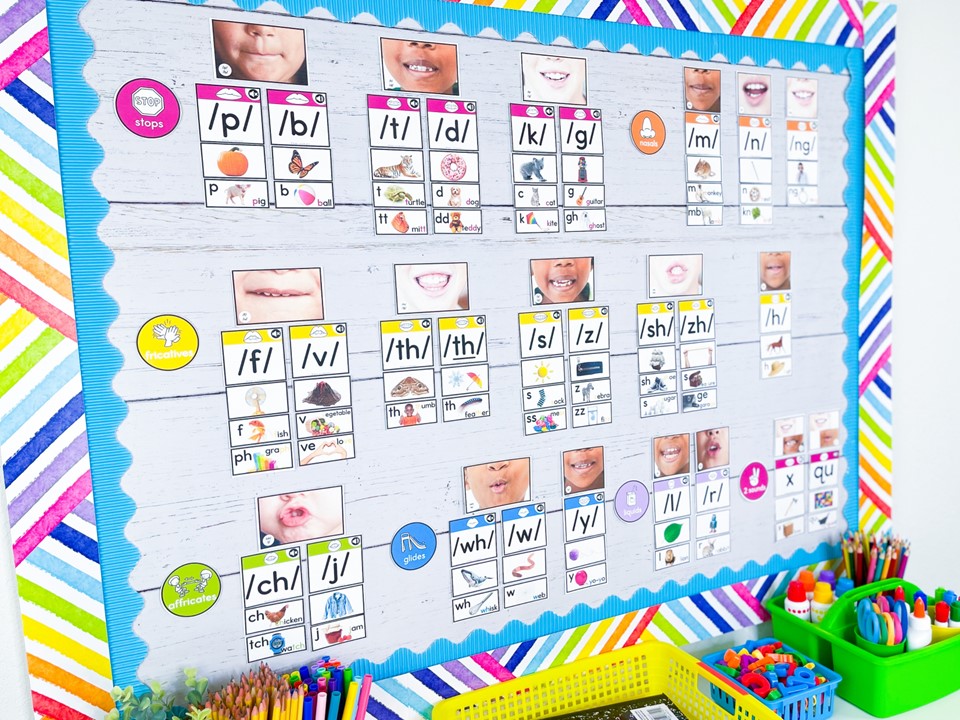
If you want to learn more about what a sound wall is and how to use it, check out this blog post: How To Use a Sound Wall in the Classroom
What do I put on my sound wall?
A sound wall is generally made up of two displays – the consonant sound wall and vowel valley.
On each of these displays, you will see the phonemes grouped by how the sounds are produced. For example, fricatives like /f/ and /th/ are grouped together because they are both made by forcing air through a narrow passage.
You can choose what will work best on your sound wall display, but I suggest having: the phoneme cards, the mouth formation images that show how to form each sound, and a key image that shows the sound in use (volcano for the /v/ sound).

How do I use the included spelling cards with real pictures?
Once you introduce a new sound to your students, you will also need to introduce how to spell that sound. You can place the spelling card under the key image, or you can just use it to introduce the sound and then leave it off the sound wall. This will depend on how much room you have.
You will most likely NOT use every spelling card included. It’s important to only include spellings that you have introduced. Otherwise, the sound wall can quickly become overwhelming for your students.
Why isn’t every letter represented on the sound wall?
Phonemes are sounds. Graphemes are how we spell those sounds. A phoneme could have several graphemes, but phoneme cards are what we’re using.
The sound wall is a display of sounds, and some letters make the same sound. For example, both c and k make the /k/ sound.
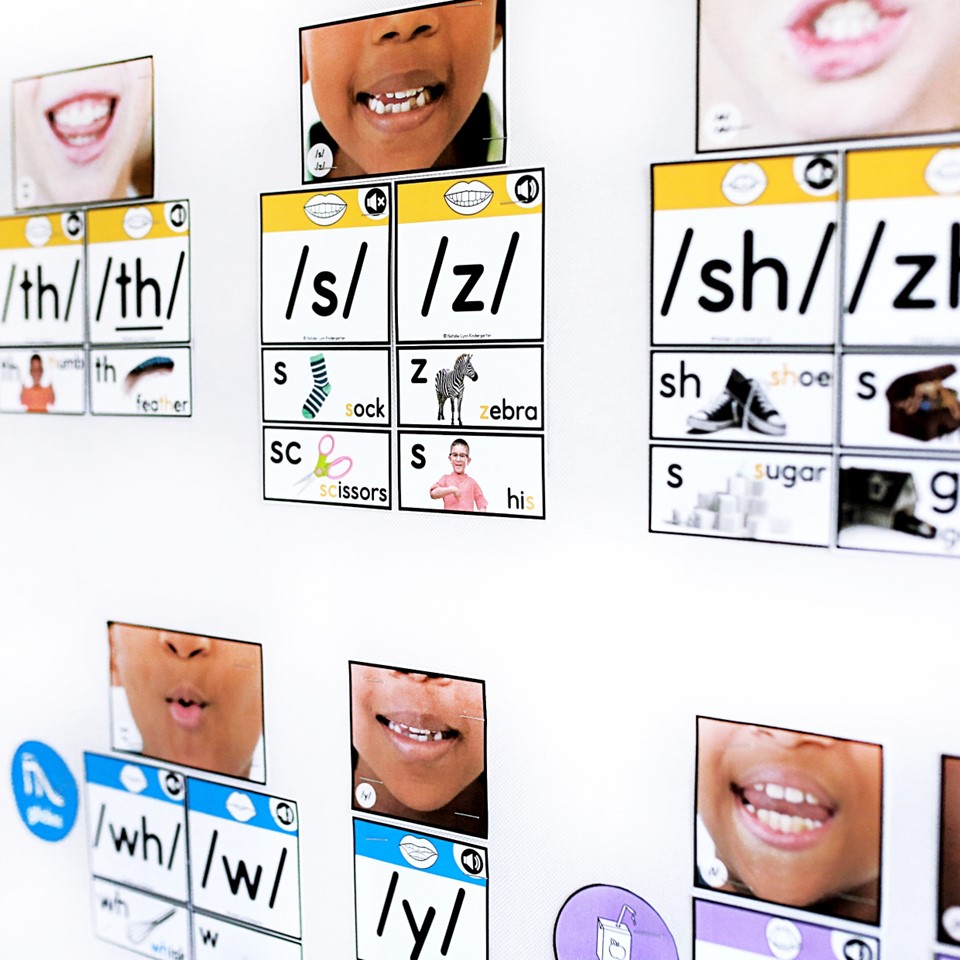
This will depend on the space you have, but as you introduce each spelling of a sound, you can place a spelling card underneath the phoneme and key image. The spelling cards have the letter or letters that make the sound, another key image, and the word. Students can refer back to these cards when writing or reading.
Why aren’t blends on your sound wall?
One question I get a lot is, why do you not have blends on the sound wall? The answer is, because blends are really two individual sounds that are already on the sound wall.
For example, the blend sm is actually two phonemes, /s/ and /m/, and those two phonemes are already on the sound wall to refer to.
I think that some of the confusion comes from people making “sound wall” displays to sell because it is a trending topic, but they don’t necessarily have the training to do it correctly. These displays are often just phonics posters, and while they are a good reference, they aren’t a sound wall.
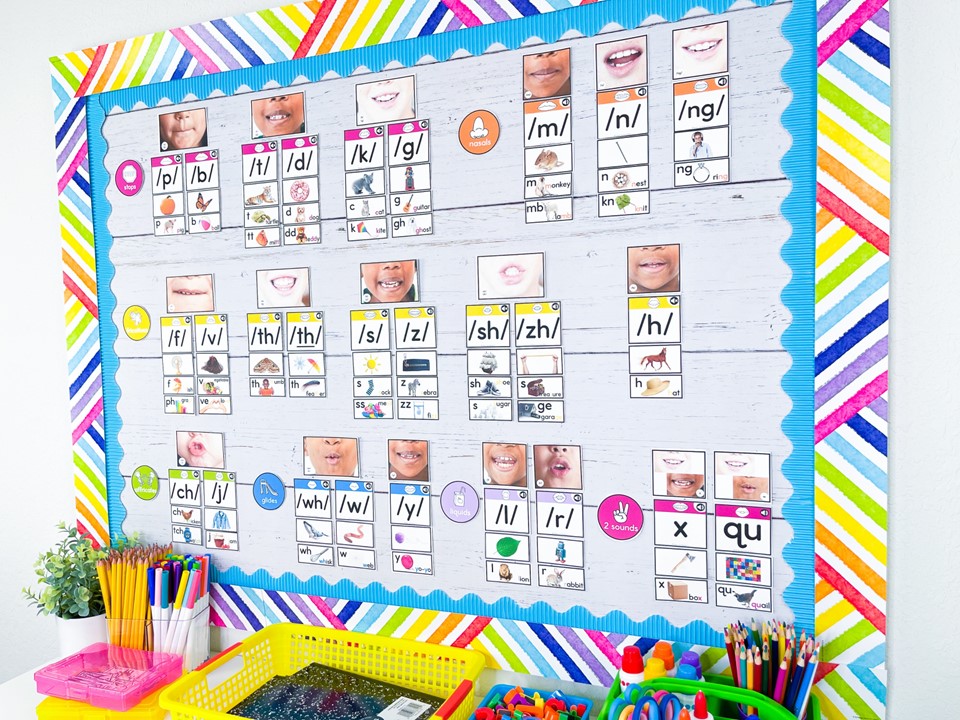
In my classroom, I would have a sound wall, but I would also have phonics posters to display as in another sections of the room, just as I would also have alphabet posters up.
Which brings me to the next question I often get:
Should I still have alphabet posters up?
When you are first putting up your sound wall, it can be easy to overthink it. Teachers often wonder if they should still have an alphabet line with alphabet posters in their classroom.
The answer is a resounding YES!
You want as many ways for students to access the alphabet as possible. Some students will refer to the sound wall, but some may find the alphabet posters easier to access. Every child is different.
In my classroom, I had a sound wall, alphabet posters, and an alphabet chart.
Can I put high frequency words on my sound wall?
You can put high frequency words or heart words on your sound wall, but I would encourage you to consider how much space you have and whether or not it would be visually overwhelming for your students.
Personally, I use the sound wall to reference the sounds when introducing and reviewing high frequency words and heart words, but I don’t display them there.
Rather, we keep a heart words or tricky words display that students can reference. For words that are temporary heart words, like the word “like”, it will be taken off once we learn the silent e phonics rule and can decode that word.
How would I display heart words on my sound wall?
If you want to display heart words or high frequency words on your sound wall, you would organize them by the tricky sound.
For example, the word said would be put under the short e phoneme. The word could would be put under the oo phoneme.
Some words may be displayed in more than once place, like the word the. Technically this word only has one tricky part (the e), but the th will also be a tricky part until the voiced sound of th is explicitly taught.
What if I don’t want to display HFW?
There are a few alternatives if you don’t want to put high frequency words on your sound wall. First, you can have a tricky words display as I discussed above.
You can add them to the mini sound wall rings included in the FREE Phonics Tool Kit download. Where you see graphemes on the cards below, you can type high frequency words instead.
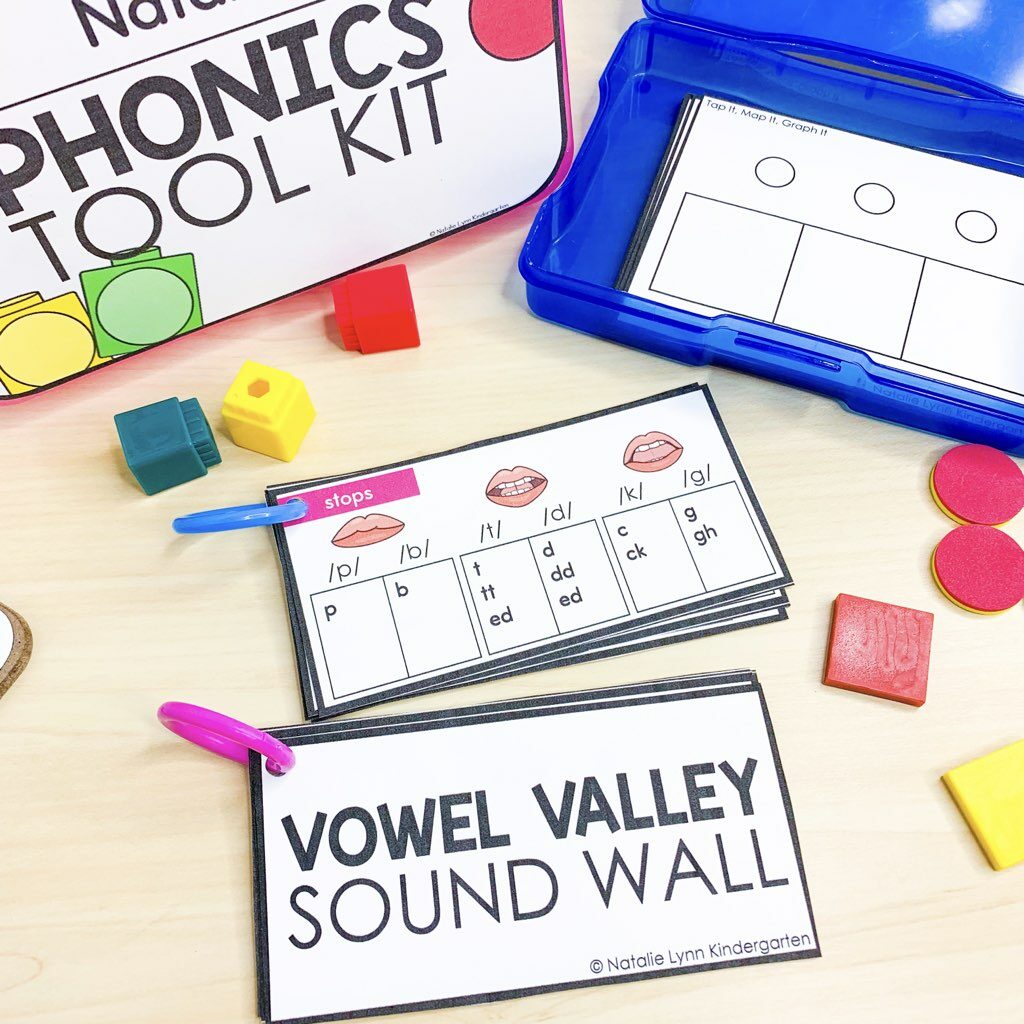
Have students reference these as you introduce the word, and then they can use the mini sound wall rings as a reference when writing.
You can also add them to the file folder version of the sound wall for students to reference. Students can keep their file folder sound wall in their book boxes or desk to reference.
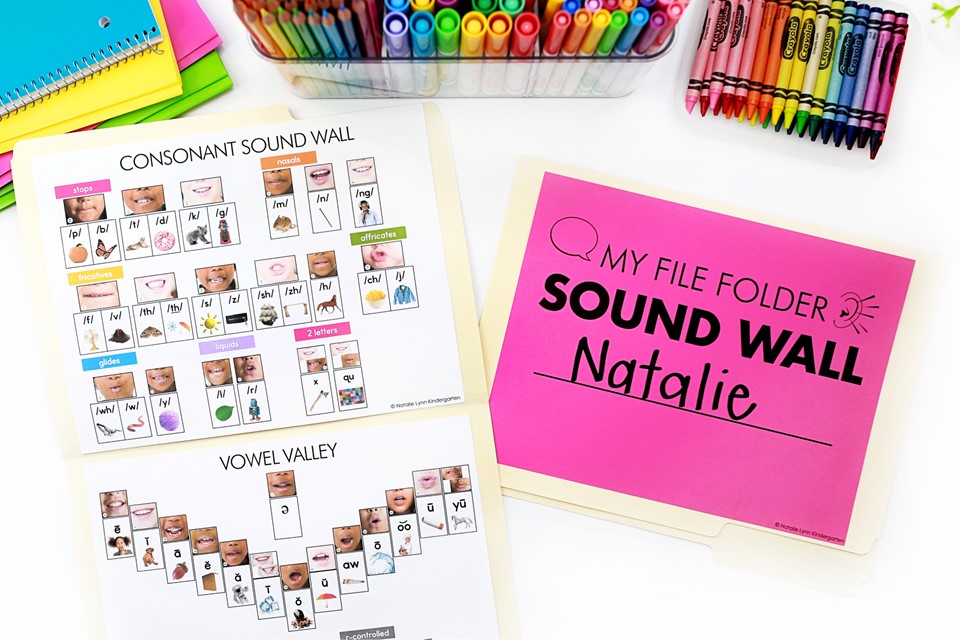
You can grab FREE file folder sound walls below, so keep on reading!
How do you use a sound wall to differentiate?
Even if all of your students are in different places along the phonics scope and sequence, it’s still important to have the entire sound wall up and to introduce every sound.
At the beginning of the year, you will want to be intentional about introducing every sound. Kindergarten teachers, this can be a part of your phonics lessons as you teach the letters of the alphabet.
Once you get through the alphabet, just set aside a few minutes each morning to introduce one new phoneme a day like /sh/ or /oo/. These aren’t spellings you will teach right away, but you still want students to be able to access those sounds.
In your Science of Reading small groups, you can further differentiate how you use a sound wall. As you introduce new spelling patterns, use the personal sound walls to reference the sound. Students can add the new spelling to their personal sound wall, or you can use the spelling card as a reference.
What size are the displays?
For my classroom sound wall, the consonant sound wall and the vowel valley sound wall measure about 5′ x 5′ each. If you want to display these on a small board you can print them at a smaller scale.
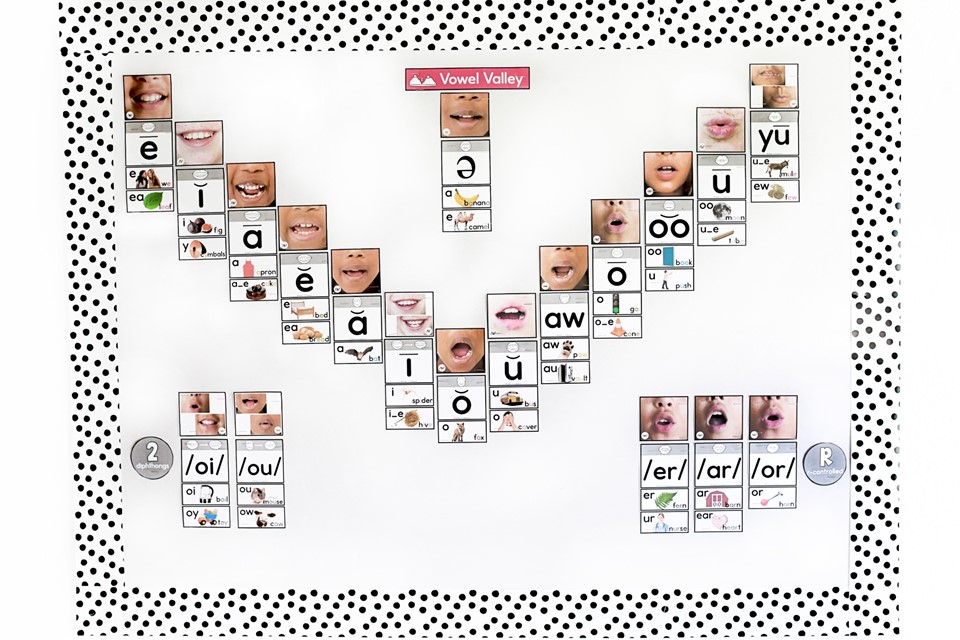
What if I’m low on space?
You can print the sound wall at a smaller size and/or glue it on a trifold poster board so that it can be moved. You can also combine the displays into one board.
Another option is to use the personal file folder sound walls or mini sound wall rings with students. A digital sound wall is included, so you can display it when you introduce the sound and then have students reference their personal sound walls.
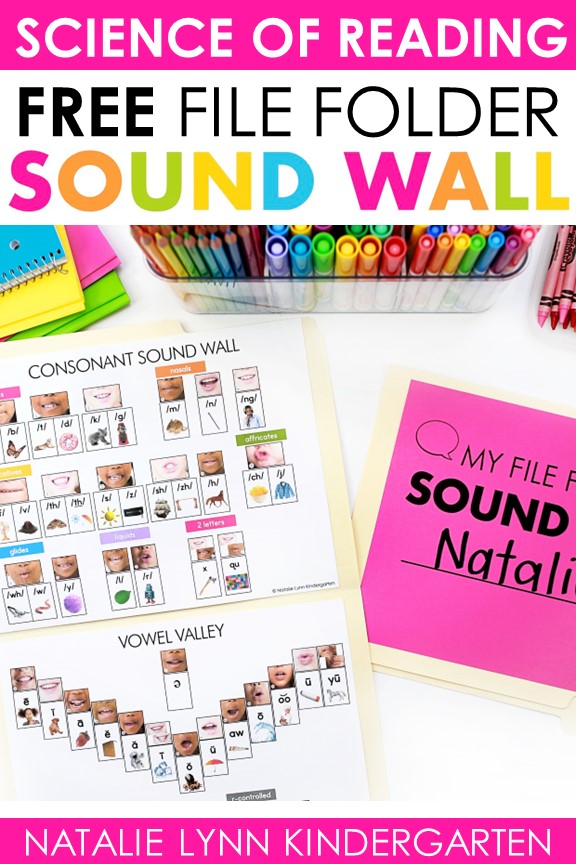
You can try out the personal file folder sound walls for FREE here. Just enter your email in the box below and the free file folder sound walls will be sent straight to your inbox.

Do you love free stuff?
free file folder sound wall
Grab these free, editable file folder sound walls to try with your class!
P.S. Having trouble? Make sure that you are using a personal gmail account to request the free file folder sound walls. School district emails and some other email providers filter out emails with outside downloads. You will also want to check your spam and promotions folders.
Do I begin the year with it all displayed?
This is one of the most popular sound wall questions I get! The answer is, it varies by grade level, but generally no. To begin, display the mouth photos, phoneme cards, and possibly the key images. The phoneme cards should be covered with a lock image or a sticky note. Uncover the phoneme card when you introduce the phoneme.
Here’s what the sound wall looked like in Jessica B.’s classroom at the start of the school year:

How do I introduce a sound on the sound wall?
Here’s an example of what I introduce new sounds on the sound wall, but you can feel free to introduce them in a way that works best for you!
“Today we are learning the sound /__/.
When we say /__/, our mouths look like this. Try it.
/__/ is like [key image].
We can spell /__/ with the letter [letter].”
Should I review the sounds on the sound wall?
You can review the sounds on the sound wall the same way you might do an alphabet chart routine.
Point to each phoneme and say the sound, key image, sound.
If you want to review the spellings, do this instead: Point to the spelling card and say the spelling, key image, and then sound. For example, “Dd, dog, /d/.”
Once students get the hang of this, it can be a quick part of your daily morning meeting. You can even have a student lead the review each day!
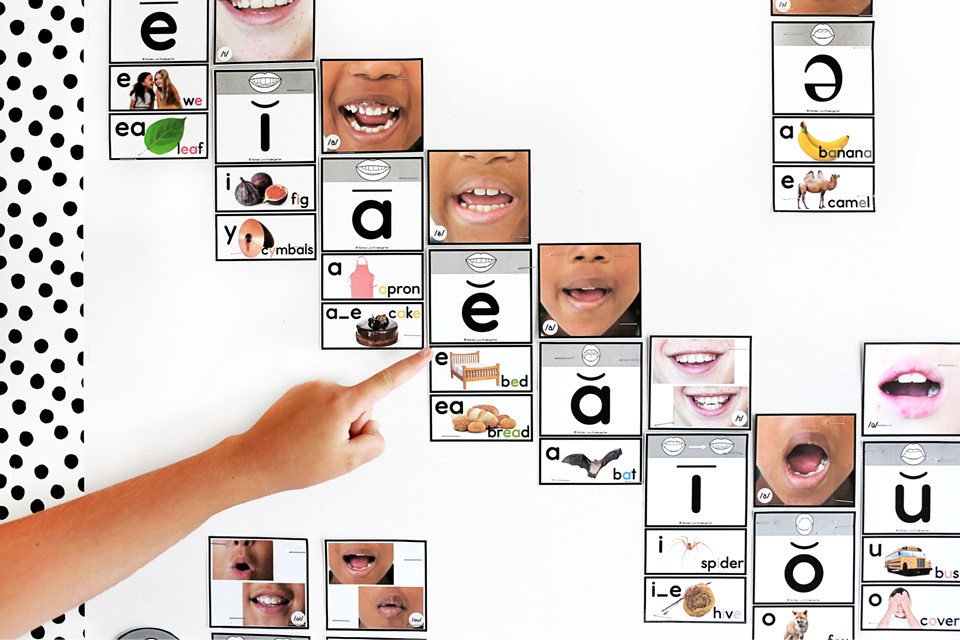
Download the Classroom Sound Wall here
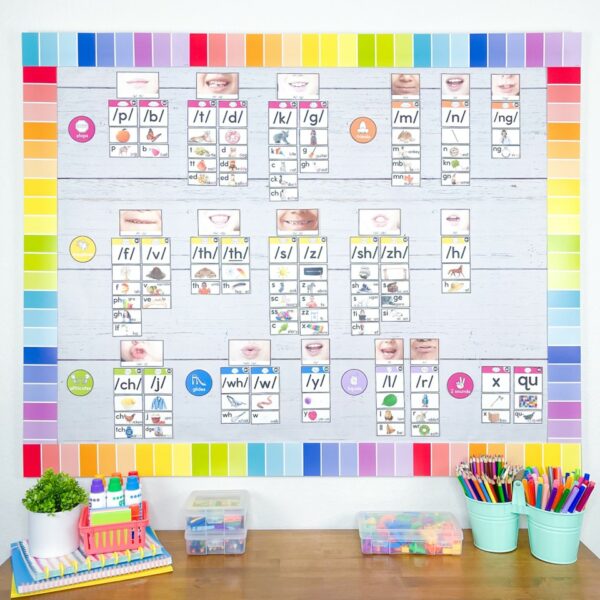
Do you love free stuff?
Free Science of Reading Sound Wall
Download a FREE Science of Reading aligned sound wall with real mouth photos and real pictures.
More about my classroom sound wall
If you’ve been eyeing my classroom sound wall and wondering if it’s right for you, here are a few more questions and answers about that exact sound wall.
What does this sound wall download include?
My classroom sound wall includes a How To Use guide, the sound wall labels, phoneme cards, mouth formation photos, key image cards, spelling cards, and personal file folder sound walls.
Does this include diverse mouth formation pictures?
Yes! It was very important to me to include diverse mouth formation pictures to help represent all students in your classroom. That said, blank cards are included so that you can add your own student mouth formation photos to even better represent your class.
Is this sound wall include in any other bundle?
Yes! You can get this classroom sound wall for FREE in the Science of Reading Guided Curriculum bundle.
I hope this blog post answered your sound wall questions and gave you confidence to make the switch to a sound wall in your classroom! As always, if you have any more sound wall questions please feel free to leave them below or reach out to me at natalielynnkindergarten@gmail.com.


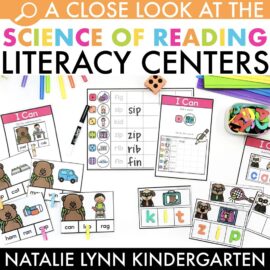
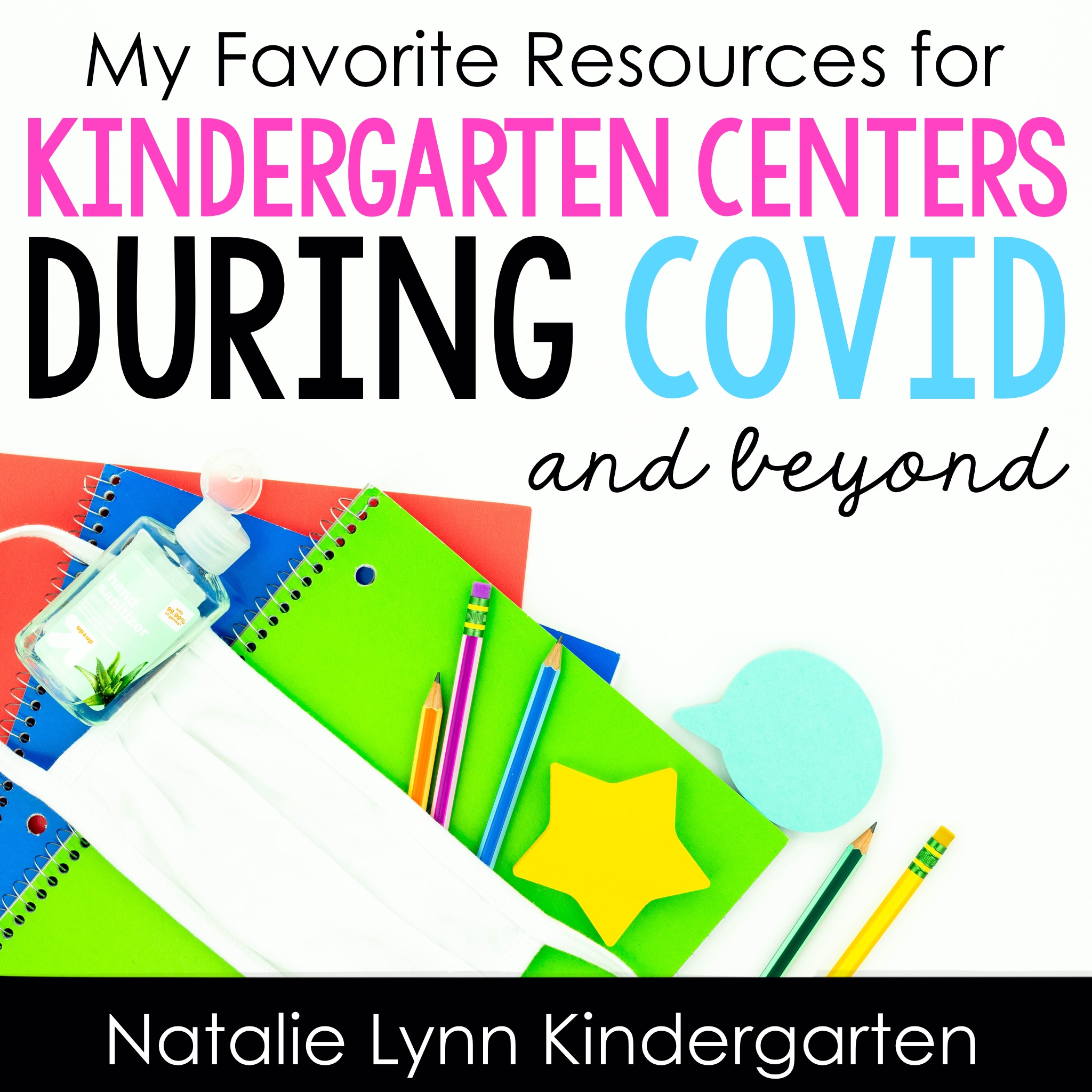


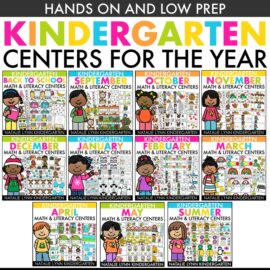
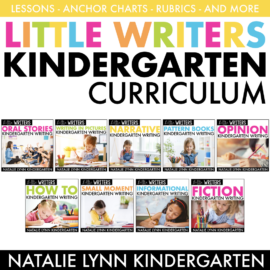
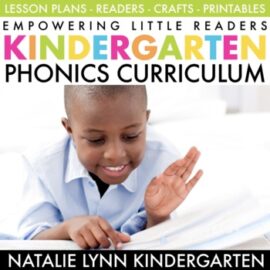
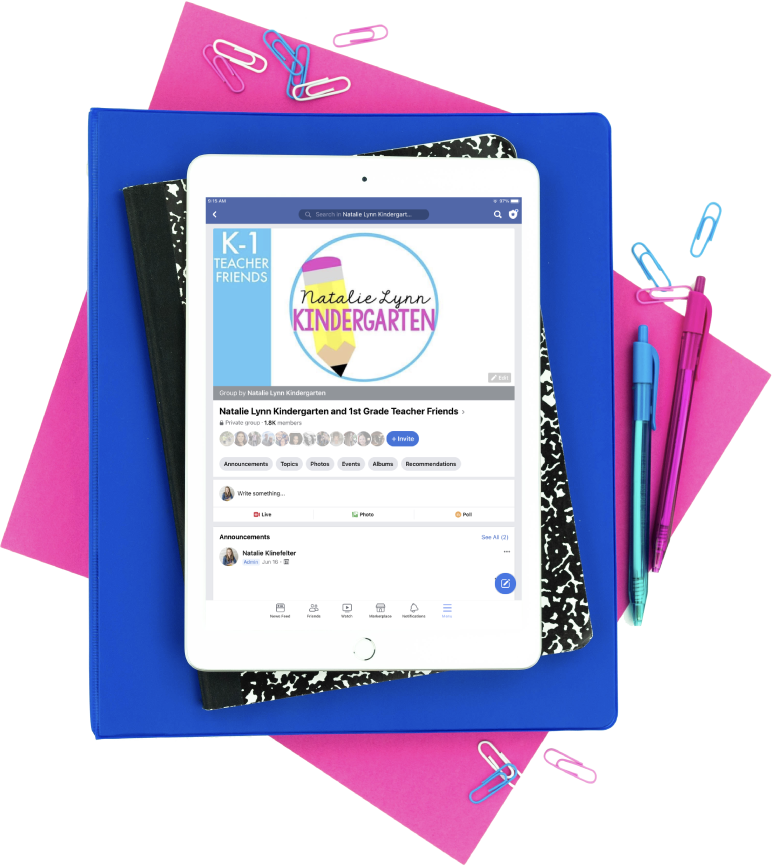

Does the “vowel valley” have to be shaped like a V? I understand the order of which the vowels are aligned in the “v shape” because they start off more straight lips and move to more rounded lips, but I am really short on space and was wondering if they can be grouped more like the consonants or in smaller groupings? Also, does it matter if you have multiple pictures to represent a particular sound? For example: if you are learning about the letter m and you have a monkey on a flash card, a mouse on an alphabet chart and a moose on the sound wall, is this okay or should all the pictures be unison? Thank you for your help, your post was very detailed and answered a lot of questions!
Hi Riley! No, you don’t have to have it in the V shape. It’s helpful as a reminder for how the jaw moves, but if you’re low on space, you can absolutely format it differently. For your second question: Having multiple key images to represent a sound is actually very helpful. It allows students to hear that sound in multiple contexts, rather than just tying it to one word. Research recommends switching up your pictures. I hope that helps!